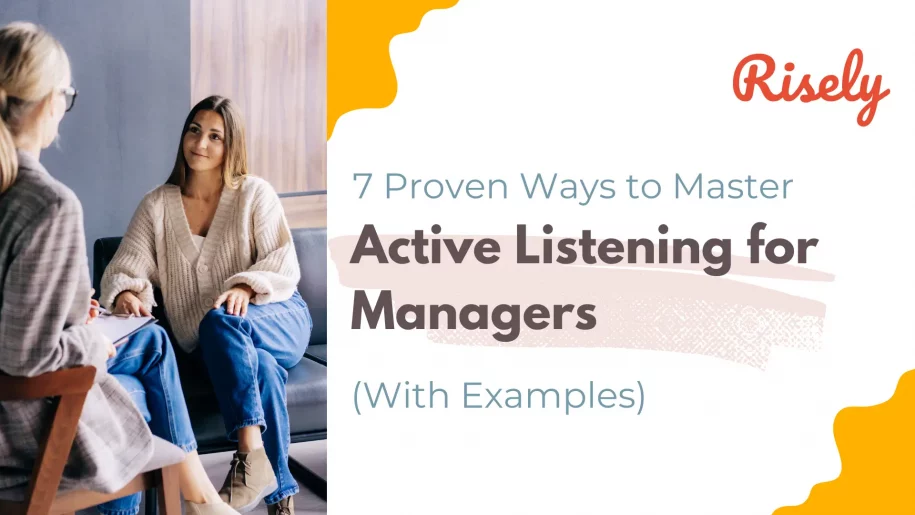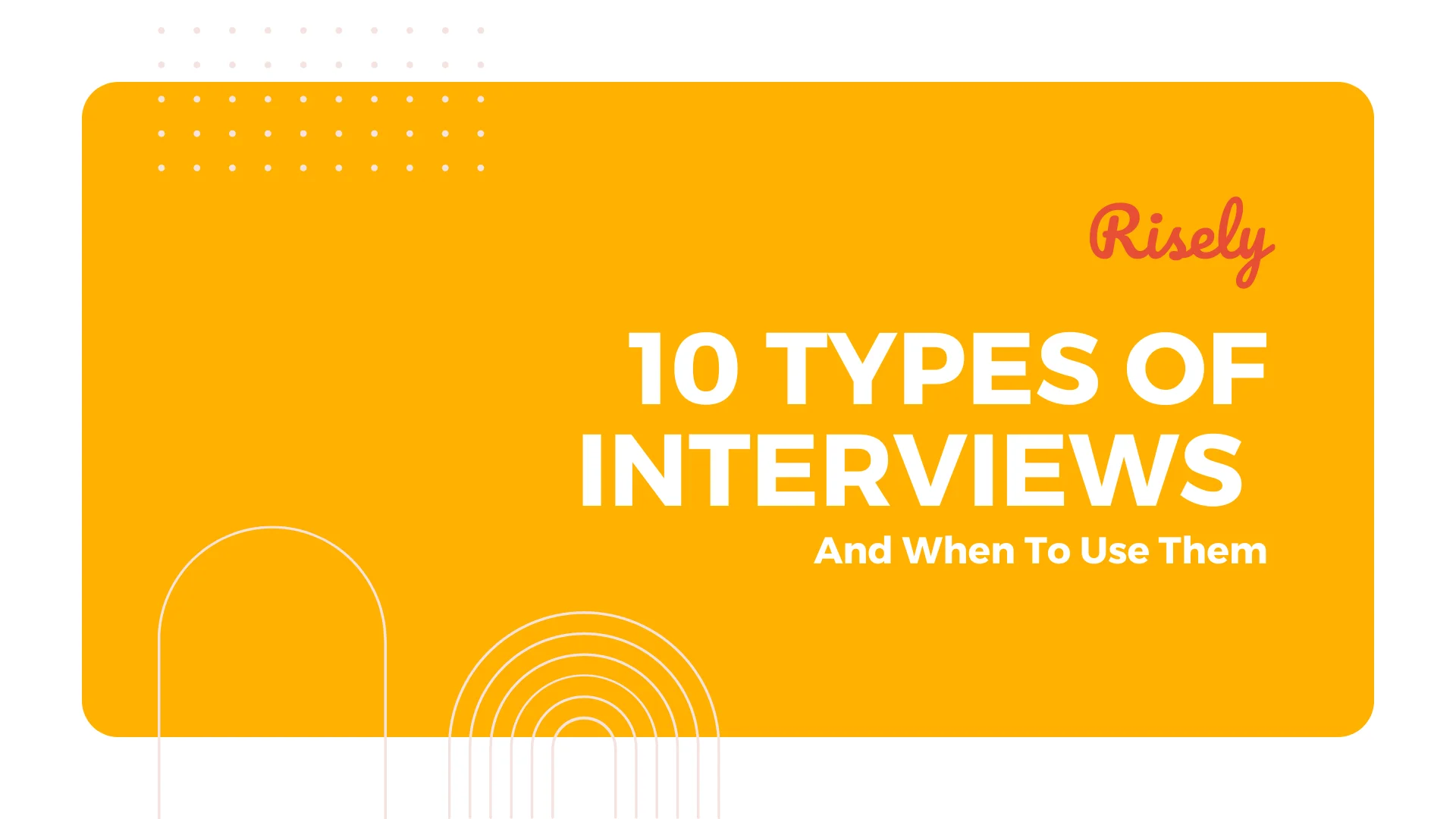7 Proven Ways to Master Active Listening for Managers (With Examples)
You deliver a brilliant presentation, overflowing with ideas, only to be met with blank stares or confused questions. You rack your brain – did your message get lost in translation? The culprit might be a silent foe – poor listening habits. In the fast-paced world of management, clear communication is king. But it’s a two-way street. That’s where active listening comes in – the superpower that allows you to truly understand your team, build trust, and foster a collaborative work environment. Intrigued? Then ditch the passive listening and get ready to unlock the secrets of active listening! We’ll explore the power of this skill, witness real-world examples of it in action, and equip you with practical steps to become an active listening pro. So, put on your listening cap and get ready to transform your communication game! Let’s dive in!What is Active Listening?
Active listening is a skill that many managers struggle with. It’s essential for creating a productive, friendly, and respectful workplace. Actively listening entails focusing on the other person, attempting to understand not just the words spoken but also the emotion behind them. It also entails responding appropriately and remembering what was said as well. Active listening is a valuable skill in which the listener makes a conscious decision. It allows you to empower yourself to become more effective in your role, as a result.Active Listening Examples
- Reflective Responses: An active listener responds to the speaker by reflecting their feelings or thoughts. For example:
- Speaker: “I’ve been feeling really overwhelmed with my workload lately.”
- Active Listener: “It sounds like you’ve been experiencing a lot of stress because of your workload.”
- Clarifying and Summarizing: Active listeners often seek clarification or summarize what the speaker has said to ensure they have understood correctly. For instance:
- Speaker: “I’m not sure if I can meet the project deadline.”
- Active Listener: “So, you’re concerned about your ability to meet the project deadline. Can you tell me more about the challenges you’re facing?”
- Non-Verbal Cues: Active listeners use non-verbal cues, such as maintaining eye contact, nodding in agreement, and mirroring the speaker’s body language, to show their engagement and attentiveness. For example, they may lean forward slightly to show they are actively engaged in the conversation.
Why should managers have Active Listening skills?
Listening attentively allows managers to better understand and influence their team members. It also allows you to demonstrate respect and assist in the building of stronger manager-employee relationships. Having excellent active listening skills will not only improve your productivity as a manager, but it will also assist you in negotiating and making decisions. Active listening is one of the most important communication skills there is. It’s a vital part of being a good manager. Yet, so many people either don’t know how to do it or are unwilling to. When you’re a manager, listening is more than just about hearing what other people have to say. It’s about understanding what they want out of the situation and how you can help them get it. So instead of just waiting for your turn to speak, start actively listening today.7 Active Listening Techniques for Managers
Understand the purpose of communication
The first step to becoming a better listener is understanding why you’re communicating with someone else. What are you hoping to achieve? If it’s just for the sake of hearing yourself talk, that might not be a good enough reason to really invest in listening attentively. Make sure your goals align with those of the other person and vice versa. If they want something from you but don’t know how to ask for it, you might be hindering their ability to get what they want. This not only aids in the conflict resolution, but it also promotes a culture of respect.Pay attention and really listen
Once you understand the importance of communication, the next step is to actually pay attention and listen intently. Don’t multitask or focus on something else – if you’re truly invested in hearing what someone has to say, all of your focus should be on them. This means not looking down or fidgeting. If you’re truly listening, these are all signs that you’re actually engaging with the person. Use reflective listening by verbal and nonverbal responses to accurately repeat what they just said and make them feel heard. Look at the speaker directly, put aside distracting thoughts, and don’t mentally prepare a rebuttal! Distractions at workplace is another big problem when we try to actively listen to a conversation. When we are trying to pay attention to something, we are susceptible to distraction. In a conversation, there’s a good chance that you will be distracted by the other person’s body language and facial expressions. You will most likely find yourself being drawn into the other person’s emotions. That can take you out of the conversation and make you lose focus on what they were saying. These are the problems one will have to overcome in order to enhance their active listening skills.Be open to learning
It doesn’t matter how good of a listener you are if you never try to learn from what someone has to say. Even if they don’t have anything valuable or constructive to say. It can be helpful for them to feel like their thoughts are being taken seriously. Open your mind to the possibilities of what they might be saying and see if there’s something you can take away from it. People listen for a variety of reasons, including obtaining information, learning to understand, and simply enjoying the conversation among others. However, if your goal is to actually resolve conflicts and achieve common goals, making sure to practice empathetic listening. By doing so, you not only build trust and rapport with the other person but also learn more about what they want and need. Follow these 10 fun active listening exercises to become better at communicatingBe patient and avoid interrupting
While it’s important to be open to learning, don’t expect everyone who speaks with you to have all the answers right away. It can often take some time for people to process information and form an opinion on a topic. Be patient and allow them to do that. Check out Breaking Down the Wall: Understanding 6 Active Listening Barriers Another common mistake people make when listening is interrupting. When you’re trying to REALLY listen, it can be difficult if someone interrupts you every few minutes to talk about something completely unrelated. If a person is speaking and you feel like they might not have finished yet, try waiting until they’ve finished before responding. This will give them the opportunity to properly complete their thoughts and avoid any potential conflicts or misunderstandings.Don’t take ownership of the conversation
One common mistake people make when listening is thinking that they have to get everything off their chest – even if it means completely ignoring what the person has just said. This can be frustrating for both parties, as it often leads to misunderstandings and arguments. Instead, try taking some time to reflect on what was said. You should also consider how you might be able to respond in a constructive way. It goes both ways in that when you are the speaker, you must take ownership of your communication and find a different way to get your point across. And when you are the listener, let the other person speak and encourage them to ask questions. Check out 20 Active listening questions to help you become a better listener.Other Interesting Reads
Offer genuine feedback after the active listening
After you’ve listened to what the other person has to say, it’s important that you offer them constructive criticism. Feedback should be specific and related to what was said – otherwise, it can seem like you’re just nitpicking (or worse, judging). Instead of “great job! Keep up the good work!” try something like “I noticed that when you _________, it made me feel _________. Would you like to explore that further?” Your feedback may focus on facts, feelings, or both. When you are actively listening, you reflect and summarize, which provides reassurance to the speaker and ensures a common understanding of the issue(s). You can use these tips in everyday conversations.Thank the person for their communication after actively listening to it
Finally, it’s always nice to thank the person who has communicated with you – even if what they said wasn’t particularly enlightening or helpful. It can show them that you appreciated their effort, which can lead to future interactions being more fruitful. Active listening is the foundation of successful communication, and it can promote a feeling of being valued or heard, as well as a feeling that trust, strengthening working relationships one of the very useful ways of doing that is by being thankful to people for their communication with you. Active listening should be considered valuable in organizations.Conclusion
Ditch the “hopeful” approach! By embracing active listening, you’re not just acquiring a skill – you’re wielding a leadership superpower. Imagine yourself as a conductor, drawing out the best from your team by truly hearing their ideas and concerns. Active listening fosters trust, sparks creativity, and paves the way for a collaborative and productive work environment. So, the next time you find yourself in a conversation, ditch the passive listening and switch on your active listening superpowers. Remember, it’s not just about hearing the words, it’s about grasping the emotions and intent behind them. By becoming an active listening pro, you’ll not only become a better manager, but you’ll also cultivate stronger relationships with your entire team. Now go forth and listen like a leader!Keep learning more about active listening with our free toolkit download
Get a chance to assess your active listening skills and tips to improve them
Other Related Blogs
10 Types of Interviews Every Hiring Manager Should Know
10 Types of Interviews Every Hiring Manager Should Know Interviews are a crucial part of the job search process, as they provide an opportunity for hiring managers to assess potential…
Performance Management Training: Empowering Managers To Manage Better
Performance Management Training: Empowering Managers To Manage Better Remember that feeling of dread when you knew performance review season was rolling around? Yeah, us, too. For many employees, performance reviews…
Leaders Who Don’t Listen Often Fail. Here’s 5 Reasons Why
Leadership is a complex and dynamic role that requires a diverse set of skills and qualities. While many attributes contribute to effective leadership, one of the most important skills leaders…
Grooming for Management: The Key to Building a Sustainable Leadership Pipeline
Imagine a crucial leadership position opening up in your organization. You scramble to fill the role, internally and externally, searching for the perfect candidate. But wouldn’t it be much better…


